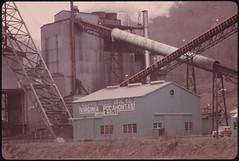 By now, news of the catastrophic BP off-shore oil rig explosion in the Gulf, and now massive resulting oil leak, has circulated national and international press. Referred to as one of the worst environmental disasters on record, with an oil spill predicted to be double that of the Exxon Valdez in 1989: at a rate of 25,000 barrels a day, a total of 2.2 million gallons of oil spilled, if the well isn’t tapped; a process experts say can take up to three months. Ironically, this event couldn’t have occurred at a more inopportune time for the President, who just a month ago announced a halt on the longstanding off-shore drilling moratorium along the US Eastern seaboard in order to expand off-shore oil and natural gas exploration. Sadly, this type of horrific environmental disaster has happened time and time again, and will continue to happen as long as we continue to rely on fossil fuels for the majority of our energy supply. The more important question to ask is: when is enough enough?
By now, news of the catastrophic BP off-shore oil rig explosion in the Gulf, and now massive resulting oil leak, has circulated national and international press. Referred to as one of the worst environmental disasters on record, with an oil spill predicted to be double that of the Exxon Valdez in 1989: at a rate of 25,000 barrels a day, a total of 2.2 million gallons of oil spilled, if the well isn’t tapped; a process experts say can take up to three months. Ironically, this event couldn’t have occurred at a more inopportune time for the President, who just a month ago announced a halt on the longstanding off-shore drilling moratorium along the US Eastern seaboard in order to expand off-shore oil and natural gas exploration. Sadly, this type of horrific environmental disaster has happened time and time again, and will continue to happen as long as we continue to rely on fossil fuels for the majority of our energy supply. The more important question to ask is: when is enough enough?
Paul Krugman correlates the recent BP disaster to the start of the environmental movement in the 1970s, when pollution was physically visible much more so than it is today. While existing EPA regulations, a result of the 1970s environmental movement, helped to cap much of the visible pollution of that time, today Americans are, ironically, less aware of environmental damage because we rarely see it. Climate change is a perfect example. Clearly there are visible products of climate change: weather shifts, species eradication and impacts on habitat, but in reality, how often do we actually stop and see these impacts? The implications are so long-term it’s often hard to comprehend.
As for BP, the oil spill happened and we cannot undo the subsequent damage. We can, however, learn from this event and wake up this time around. We have the chance to shift to a clean energy future; we have the technology, the brain power and the interested institutes and Universities. We now need strong, unfaltering leadership. No longer can we rely on such dirty and dangerous methods of energy production – the damage surely out weights any benefit.
![[Men working on telephone lines, probably near a TVA dam hydroelectric plant] (LOC) by The Library of Congress](http://farm3.static.flickr.com/2142/2179061201_9dc6316ae0_m.jpg) On Monday, the DOE announced a $18.5 million grant will be dispersed via the U.S. Department of Energy’s Advanced Research Projects Agency-Energy (ARPA-E) amongst various energy research labs and companies throughout New England. The funds are part of the larger $349 million Recovery Act funding pool and will be used primarily for energy efficiency projects; specifically in this case, solid state lighting using gallium nitride, air conditioning efficiency, chemical flow batteries, and overall energy storage capacity research.
On Monday, the DOE announced a $18.5 million grant will be dispersed via the U.S. Department of Energy’s Advanced Research Projects Agency-Energy (ARPA-E) amongst various energy research labs and companies throughout New England. The funds are part of the larger $349 million Recovery Act funding pool and will be used primarily for energy efficiency projects; specifically in this case, solid state lighting using gallium nitride, air conditioning efficiency, chemical flow batteries, and overall energy storage capacity research.








 From a record-breaking freeze threating an entire crop of citrus in Florida to significant snowfall in England, many are wondering just how “real” global warming actually is…considering how cold it’s been lately. To set the record straight, let’s begin by using the term “climate change” instead of “global warming.” While indeed the Earth’s core temperature is rising at an alarming rate, what that temperature rise actually does is shift the various ecosystem temperatures on Earth either up or down; it doesn’t necessarily mean temperatures will be high everywhere, but that the climate will, in fact, change drastically in one way or another. Some previous Ice Ages, for example, were triggered by changes in ocean currents and surface water temperature due to cold, fresh water from the melting polar ice caps disrupting major ocean currents.
From a record-breaking freeze threating an entire crop of citrus in Florida to significant snowfall in England, many are wondering just how “real” global warming actually is…considering how cold it’s been lately. To set the record straight, let’s begin by using the term “climate change” instead of “global warming.” While indeed the Earth’s core temperature is rising at an alarming rate, what that temperature rise actually does is shift the various ecosystem temperatures on Earth either up or down; it doesn’t necessarily mean temperatures will be high everywhere, but that the climate will, in fact, change drastically in one way or another. Some previous Ice Ages, for example, were triggered by changes in ocean currents and surface water temperature due to cold, fresh water from the melting polar ice caps disrupting major ocean currents.